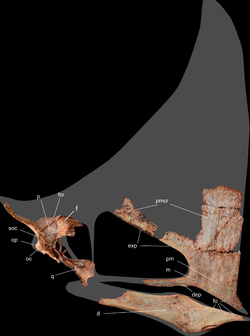തെറാപ്പോഡ എന്ന് കേൾക്കുപ്പോ മനസ്സിൽ ആദ്യം ഓടിവരുന്ന ചിത്രം റ്റിറാനോസോറസ് റെക്സ് എന്ന ഭീകരന്റെ തന്നെ ആവും എന്തായിരുന്നു തെറാപ്പോഡകളുടെ വിജയ രഹസ്യം, എന്ത് കൊണ്ട് തെറാപ്പോഡകൾ ഇത്രക്ക് വിജയകരമായി ഭൂമിയിൽ വ്യാപിച്ചു . തെറാപ്പോഡ വിഭാഗത്തിൽ പെട്ട ദിനോസറുകൾ പൊതുവേ മാംസഭുക്കുകൾ ആയിരുന്നു ., ഇവയുടെ അറക്കവാളിന്റേതുപോലെ പല്ലുക്കൾ ആണ് ഈ വിജയത്തിന് പിന്നിൽ ഉള്ള രഹസ്യം എന്ന് പുതിയ പഠനങ്ങൾ തെളിയിക്കുന്നു.
Tooth morphology and development can provide valuable insights into the feeding behaviour and evolution of extinct organisms. The teeth of Theropoda, the only clade of predominantly predatory dinosaurs, are characterized by ziphodonty, the presence of serrations (denticles) on their cutting edges. Known today only in varanid lizards, ziphodonty is much more pervasive in the fossil record. Here we present the first model for the development of ziphodont teeth in theropods through histological, SEM, and SR-FTIR analyses, revealing that structures previously hypothesized to prevent tooth breakage instead first evolved to shape and maintain the characteristic denticles through the life of the tooth. We show that this novel complex of dental morphology and tissues characterizes Theropoda, with the exception of species with modified feeding behaviours, suggesting that these characters are important for facilitating the hypercarnivorous diet of most theropods. This adaptation may have played an important role in the initial radiation and subsequent success of theropods as terrestrial apex predators.
കുടുതൽ വായനക്ക്
https://en.wikipedia.org/wiki/Theropoda
https://ml.wikipedia.org/wiki/തെറാപ്പോഡ
http://www.nature.com/srep/2015/150728/srep12338/full/srep12338.html#introduction
കടപ്പാട്
* For images wiki commons
*For
Title:
|
Developmental and evolutionary novelty in the serrated teeth of theropod dinosaurs
|
Author:
|
K. S. Brink, R. R. Reisz, A. R. H. LeBlanc, R. S. Chang, Y. C. Lee, C. C. Chiang
|
Publication:
|
Scientific Reports
|
Publisher:
|
Nature Publishing Group
|
Date:
|
Jul 28, 2015
|













